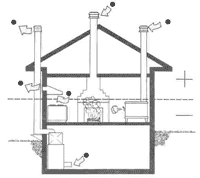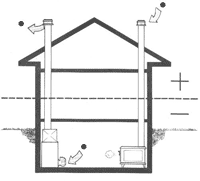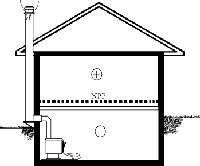NEGATIVE AIR PRESSURE - What is it?
Negative air pressure is a phenomenon discovered after the energy crises in the seventy’s, and caused when houses began to be built to more energy efficient standards. An R2000 and the now R3000 homes are airtight and very energy efficient.
This type of house will show some or all of the following symptoms;
*Back drafting of combustion appliances such as the fireplace, wood stove, gas hot water heater and even the furnace
*Mold, mildew and moisture as well as condensation which shows itself around windows or on walls
*A lack of fresh air, a musty smell, lingering odors around the house
*Stagnant, stale, heavy, air causing high humidity and condensation
*A rush of air or draft when opening an exterior door.
These are all typical symptoms of an energy efficient airtight house, or sick building syndrome, but they are just that symptoms and very few people realize the health problems arising from living in an airtight house.



